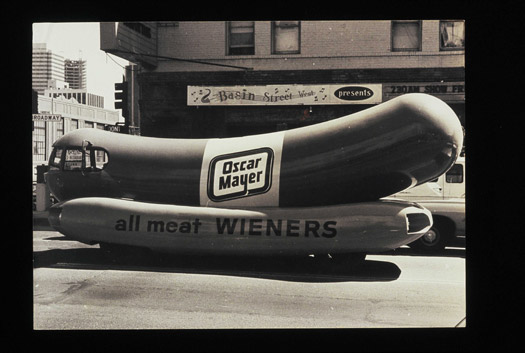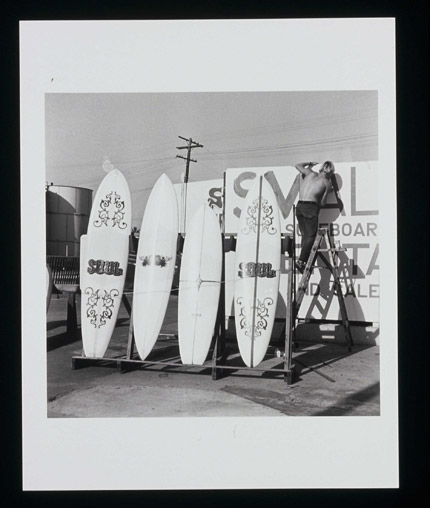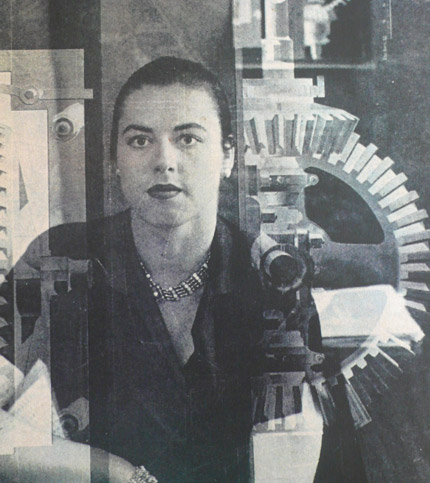
Cat Genie, Self-Flushing, Self-Washing Cat Box
An Amazon reviewer called N.A. Cat Lover, who turns out to be a doctor from Tampa, Florida, bought a self-washing, self-flushing cat toilet. His review of the product begins, “Cat Genie takes the small unpleasantness of daily cleaning the litter and it saves it up and releases that unpleasantness as one big unscheduled, unpleasant inconvenience every week or two… You may be pleasantly awoken in the middle of the night by the repeating three beeps of ‘there's poo and hair in the hopper.’ You will become more familiar with your cat’s feces every day as the cat genie gently fills your home with the aroma of baking excrement.”
An Amazon reviewer called N.A. Cat Lover, who turns out to be a doctor from Tampa, Florida, bought a self-washing, self-flushing cat toilet. His review of the product begins, “Cat Genie takes the small unpleasantness of daily cleaning the litter and it saves it up and releases that unpleasantness as one big unscheduled, unpleasant inconvenience every week or two… You may be pleasantly awoken in the middle of the night by the repeating three beeps of ‘there's poo and hair in the hopper.’ You will become more familiar with your cat’s feces every day as the cat genie gently fills your home with the aroma of baking excrement.”
The review is not just hilarious; it can also be seen as an example of a democratizing impulse in design criticism.
According to Amazon, there are a mere three suggestions to bear in mind when writing a “good review,” namely: “Be detailed and specific; What would you have wanted to know before you purchased the product? Not too short and not too long. Aim for between 75 and 300 words.” At 534 words, N.A. Cat Lover’s full review, flagrantly disregards Amazon’s suggested word limit. It is detailed and specific, however: “you will find yourself hunched over your cat's feces floating in a pool of fetid water, picking small plastic pellets out of the opaque, pungent water with your fingers so that you can get the device put back together, ” Cat Lover writes. It also provides technologically specific and historically informed commentary: “Plus, you get to pay over $300 for technology that was ‘designed’ and built for less than $2. The ‘processor’ unit was designed in 1967 and allows all the functionality of the most advanced microchip devices of its era. It has both on and off modes. (Note: off mode available only while unplugged)”.
But Beautiful is author Geoff Dyer’s collection of semi-fictional riffs on the lives and works of the great jazz musicians. He labels the mode in which he writes as “imaginative criticism.” Instead of merely describing saxophonist Lester “Pres” Young’s “wispy, skating-on-air” tone, for example, Dyer paints a picture of everything that he imagines having led up to that tone: the untouched plates of Chinese food in Young’s hotel room, the unringing phone, the gins with sherry chasers, his porkpie hat and cologne bottles on the bedside cabinet, and the condensation on the hotel window as he gazes across Broadway at Birdland. In the preface, Dyer introduces what he means by “imaginative criticism:” “Before long I found I had moved away from anything like conventional criticism. The metaphors and similes on which I relied to evoke what I thought was happening in the music came to seem increasingly inadequate. Moreover, since even the briefest simile introduces a hint of the fictive, it wasn’t long before these metaphors were expanding themselves into episodes and scenes. As I invented dialogue and action, so what was emerging came more and more to resemble fiction. At the same time, though, these scenes were still intended as commentary on either a piece of music or on the particular qualities of a musician.”
The reviews that go beyond the standard fare on Amazon are those that, like Dyer’s vignettes, evoke worlds in which absurd products, like a self-flushing cat toilet, make sense. Another Amazon product review that exemplifies the principles of imaginative criticism as described by Dyer is a rather brilliantly sarcastic testimonial of a T-shirt adorned with three airbrushed wolves howling at a spectral moon: “This item has wolves on it which makes it intrinsically sweet and worth 5 stars by itself, but once I tried it on, that's when the magic happened. After checking to ensure that the shirt would properly cover my girth, I walked from my trailer to Wal-mart with the shirt on and was immediately approached by women. The women knew from the wolves on my shirt that I, like a wolf, am a mysterious loner who knows how to 'howl at the moon' from time to time (if you catch my drift!)” The reviewer, B. Govern, exploits our familiarity with the traits of the demographic he supposes is likely to wear such a T-shirt. He concludes the review with a summary:
Pros: Fits my girthy frame, has wolves on it, attracts women.
Cons: Only 3 wolves (could probably use a few more on the 'guns'),
cannot see wolves when sitting with arms crossed, wolves would
have been better if they glowed in the dark.

Mountain Three Wolf Moon Short Sleeve Tee
Even though it functions as a bustling bazaar, visually Amazon is a cold hard place devoid of images of people or the circumstances in which the goods might be used. These reviews provide the disembodied objects with human context — verbal mise-en-scenes — in which they can be imagined more vividly. They use satire and narrative to entice the reader into a very particular world and then, by providing enough convincing detail, they persuade the reader to stay. The detail reassures the reader that this author is for real, that they really have used and reflected on the product in question — that they actually care. In the case of the CatGenie, it’s the way that NA Cat Lover notes the three beeps of the machine’s alarm; with the T-shirt it’s the accumulation of brands and entities that accessorize the T-shirt wearer’s lifestyle — Mountain Dew, tube socks, Wal-mart, crystal meth and the courtesy scooter — in a neat subversion of status symbols like naturally sparkling mineral water, Mont Blanc pens, Barney’s, cocaine, and BMW 320is that litter the Yuppie fiction of Jay McInerney and Bret Easton Ellis.
Cat Lover’s review is deemed helpful by 1,206 of 1,246 people and it continues to generate active discussion in both the Self-cleaning Litter Box community and the Automatic Litter Box community. Most articles or columns written by design critics generate very little response — at best a handful of letters to the editor or a couple of screens of off-topic online comments.
The Three Wolf Moon T-shirt review was posted more than a year ago and yet it continues to elicit comments and, fascinatingly, other reviews in the style of the original review. To date, the Three Wolf review has garnered 1,650 responses and new reviews and scored its author Brian Govern, a Law student at Rutgers, and the T-shirt national news coverage, 9,000 diggs, and a dedicated song and video.
Many critics complain of the experience of writing into a vacuum and having no idea if their point hit home or not. Thanks to the meta-discourse that now surrounds the practice of online product reviewing, one can analyze the impact of a review on several levels: how it affected sales of the product and related products, how much it was read and responded to and how many people were moved to write their own reviews. B. Smith, remarking on the reviews spawned by Edgar’s narrative poem about Tuscan Whole Milk 1 gallon 128 fl oz, says, “I don't remember how I came across these reviews, but I agree they are the most inventive reviews on Amazon. After reading a few hundred, I had to compose my own. I still check the site for new reviews.”
In some ways, the work of NA Cat Lover and Brian Govern represents, not a deviation from the true path of design criticism but, rather, a logical extension of a democratizing impulse that has always been at its core. Ever since the late 1940’s and early 1950’s when design criticism emerged as a genre in its own right alongside the industrial design profession, many design critics have said that one of their main goals is to enable their readers to perform their own criticism.

Reyner Banham
Reyner Banham, who wrote for general interest magazines such as New Society and New Statesman as well as design and architecture magazines in the late 1950’s and 60’s, helped to democratize discussion about design in two ways:
Reyner Banham, who wrote for general interest magazines such as New Society and New Statesman as well as design and architecture magazines in the late 1950’s and 60’s, helped to democratize discussion about design in two ways:
First, instead of writing only about museum-sanctioned “good” design, he wrote about the kinds of cheap, mass-produced, expendable objects that actually figured in regular peoples’ lives. In the 1950’s design criticism tended to be aligned with the public service oriented and proselytizing missions of design institutions such as the Design Council in the UK and MoMA in the US. Banham, by contrast, worked independently as a writer for various publications, and was free to explore the vernacular and whatever else caught his eye. Banham used the iconographic methods of art criticism (learnt as a student at the Courtauld Institute) but he applied them to designed objects and phenomena that lay beyond art or even architecture criticism’s regular territory — he took criticism, quite literally, out into the field. In the late 1960’s he wrote a weekly column called “Design and Society” in which he analyzed such aspects of the popular culture as Californian surf boards, bank notes, potato chip bags, paperback covers, the decoration of ice cream trucks, and LA signage.




Photograph by Reyner Banham of Oscar Mayer promotional truck

Photograph by Reyner Banham of Californian surfboards
The second way in which Banham helped to democratize discussion about design was by making the language and tools of criticism available to his readers in order that more people could talk about and appreciate the design that surrounded them. In an essay such as O Bright Star, for example, his 1983 meditation on the design of sheriffs’ badges, Banham brings transparency to the critical act and uses engaging jargon-free language. He describes his research and evaluative process step by step, from the moment the decoration of the badge excites his curiosity (when he saw one “resplendent on the uniformed bosom of the female deputy sheriff” that checked his baggage) through his dogged tracking of the badge to its source of manufacture and finally to his realization, as the result of an overheard telephone call, that the badge was designed by the company secretary.
By making his subject matter so accessible and his critical process so visible, he empowered the casual and independent observer to comment on their own designed environment.
Another writer committed to the popularization and democratization of design criticism is Jane Thompson (then Mitarachi,) a founding editor of the recently deceased Industrial Design, which was launched in 1954. She co-edited the magazine with Deborah Allen and together they developed a new type of writing for the emerging industrial design profession. Their pragmatic analyses of cars, washing machines, cutlery, and chairs drew as much from their experience as users of these objects as from their connoisseurship.
Thompson told me in an interview that she thinks critical writing is about “trying to explain something so that the other person can have an opinion or evaluate it as well as you.” Such generosity of spirit is surely at the heart of good criticism and, for good and bad, has contributed to its escape from a professional stronghold.

Jane Thompson (then Fiske McCullough) in Charm magazine, November 1957
Design criticism is, by necessity, more self-aware of its proximity to the marketplace than are other critical genres like art or literature. It must deal explicitly with the mechanics of making, retail, and distribution — the greasy wheels of commerce — and that’s why the primary location of today’s design criticism at the heart of the biggest online marketplace, Amazon.com makes so much sense. Online customer reviews deal with design on its own terms; they understand design’s unique complicity with commerce.
Design criticism is, by necessity, more self-aware of its proximity to the marketplace than are other critical genres like art or literature. It must deal explicitly with the mechanics of making, retail, and distribution — the greasy wheels of commerce — and that’s why the primary location of today’s design criticism at the heart of the biggest online marketplace, Amazon.com makes so much sense. Online customer reviews deal with design on its own terms; they understand design’s unique complicity with commerce.
Criticism is only really productive if it reaches its intended audience in a way that surprises, goads or otherwise convinces them to act. Those of us who have a professional interest in writing compelling design criticism would do well to consider this ability on the part of recreational reviewers to hook, hold, and inspire an audience to create their own reviews and, in the case of the Three Wolves T-shirt review, to undercut the entire genre of inanely celebratory, and often bogus, customer product reviews. Online product reviews enrich the practice of design criticism by enabling it to continue the democratizing tradition of such critics as Banham, Mitarchi and Allen who were confident and generous enough to allow access by all to their tools, methods and vocabularies.


Comments [7]
01.28.10
02:51
The other name I'd add to your persuasive pantheon is the late Lester Bangs, the rock critic. His magnificently cranky writing reflected the opinions and obsessions of a guy stuck in his messy apartment with too many beloved books and records scattered across the floor - which was pretty much exactly who he was.
01.28.10
04:16
01.29.10
11:24
01.29.10
03:52
Baker got to take some creative revenge on King, AND got paid for the article (I believe it ran in the New Yorker...)
Thanks for the article, it was excellent and thought-provoking. But it coulda used a few more wolves, maybe on the 'guns.'
01.30.10
10:23
05.31.10
08:21
-andy
www.ventme.com
08.03.11
03:10